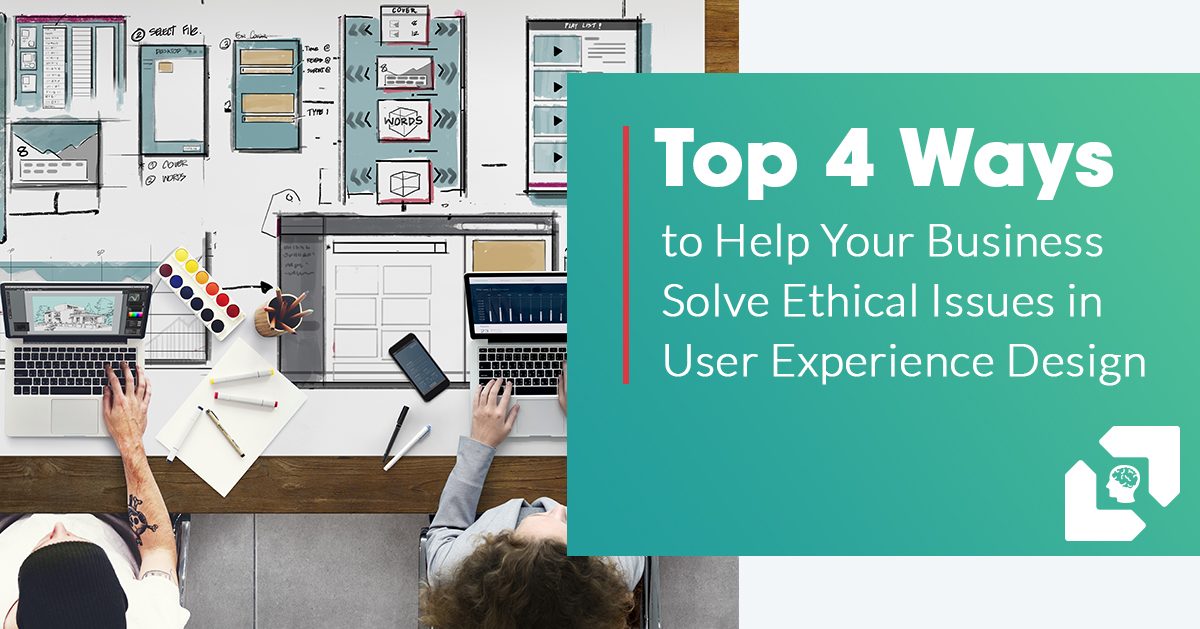Make sure accessibility isn’t an afterthought. Integrate ethical design thinking to evolve how your business thinks so you can tackle web accessibility like never before.
Just like any incredible user experience, you need to start somewhere. Web accessibility is an important, business-enhancing factor in how well your website functions, how engaged your users will be and how effectively you convert your audience into happy customers.
These four approaches inform how we guide our clients to take an ethical design mindset and put true customer-centric thinking – that includes all of their customers – at the core of how we build websites.
Take your personas to the next level
You’re probably already familiar with brand personas. They’re a standard feature for any business-building strategy and a core feature in how to build websites that will resonate with your intended audience.
But that’s just the beginning.
“One of our goals is to set a standard to build accessibility personas as part of our regular requirement gathering. For example, if a client knows they need to reach WCAG AA, we can use personas upfront to drive requirements, determine design and brand elements, and integrate that awareness of accessibility throughout the project, beginning with development and testing to content creation and approval,” says Adrian Alleyne, VP of Delivery at Appnovation.
With many of the most common types of accessibility needs to be represented – including permanent and nonpermanent to positively impact the greatest number of accessibility users – an integrated approach with accessibility personas helps ensure your website is designed from the very beginning with accessibility ingrained in the process.
“We purposefully create areas within our personas and journeys that help to bring attention to all users’ needs, including both ethical and accessible. We work together with our Usability Design team to ensure our strategic solutions include the most up to date design considerations and that their creation and implementation are fully baked into their entire process,” states Lindsay Stanford, Director of Strategy at Appnovation.
Audit with impact through first-hand experiences
Accessibility user testing, by persons with lived experience of a disability, is a key method to ensure accessibility compliance and QA.
But when it comes to an ethical design mindset, and truly grasping the importance of accessibility, building opportunities for everyone in your business to have close, real-life experience of what it’s like to use your website with a disability can supercharge your team’s feelings of awareness and empathy.
Reading about accessibility and truly experiencing it are completely different. They can be key to creating a true sense of ownership and a full realization of why web accessibility is so important.
- Audit all of your video content with the sound off to test closed captioning
- Use a colour blindness filter to test the contrast ratios and colour usages throughout your site
- Try navigating through all features of your site using an assistive tool or site reader
- Use your site without a mouse and use keyboard only to get a sense of how users with physical or motor skills experience your site
Adrian Alleyne, VP of Delivery at Appnovation reinforces these suggestions, “Right now we’re looking at numerous ways for both our internal team members and clients to audit their site through simulators that show what it would be like for a person with specific types of disabilities. This type of real-world feel is crucial to get a true sense of what it’s like to use your set, and are invaluable to fostering a really authentic, involved mindset around accessibility. We’re looking to create environments where people can experience accessibility challenges first hand and walk away with a renewed sense of purpose to address them.”
Make it easier with templates and automatic processes
Many of the factors that impact accessibility feel invisible. Usually, that’s intentional, but with so much of the work happening behind the scenes, it can be tricky to track it accurately and make sure it’s working.
For example, as sites become increasingly image- and video-heavy, the closed captioning, alt text and other descriptions that make them readable to assistive devices become more important than ever. But the process of sourcing visuals, particularly for larger global brands with offices in multiple countries, is varied and can make ensuring that videos and images show up accompanied by their required accessibility information can be difficult, if not impossible.
Creating processes to operationalize when an image is “final,” being sure to include that it’s not only the approval of the image itself but of the copy and alt text that should come with it, is a major step to making accessible web development smoother for everyone involved.
All of these intricate steps (and the possible delays they can cause if not followed correctly) can impact scheduling and budgeting around the entire project.
“We want to make sure that all of the pieces fit. Truly integrating accessibility throughout the entirety of a project, including project management templates, cost estimates, and more, can feel like a significant uplift in time and price for a site. That can be ameliorated by talking about everything upfront, and showing how small things – like needing to go back for alt text for what could be dozens or even hundreds of images – can delay a project. We make everything go more smoothly by succinctly and clearly putting our accessibility needs in a row from the beginning, and creating whatever templates and other efficiencies we can to address them,” urges Adrian Alleyne, VP of Delivery at Appnovation.
Get a second (and third-party) opinion
Over time, it’s understandable (and to be expected) that our natural biases will creep into our own ways of thinking and affect how we view the effectiveness of our work.
While it’s not realistic to easily eliminate bias, accepting that they’ll occur and finding proactive approaches to address them is easier than you might think.
Internal audit and review processes are an integral part of business, and those should remain. But for factors as important, and commonly misunderstood, as web accessibility, this is where bringing in a second opinion from an expert third-party audit can have an incredible impact.
On top of that, clients can sometimes, and understandably, be driven by internal business opinions or other emotional factors (“My CEO said everything has to be green!”) at the cost of accessibility needs, user experience best practices, or a combination of both.
An external audit can not only be an effective way for both us and our clients to view our work together with a fresh eye, but can help give an independent voice of reason for why decisions are being made the way they are.
Adrian, states, “It’s a fine balance of being passionately interested in the success of our clients, but at the same time knowing how to take a balanced view from an external mindset as well. As much as we’d all like to believe we can always put ourselves into our customers’ (and clients’) shoes, a third-party audit or independent review is an invaluable tool we use to get a fully neutral and unbiased view on what we’re building.”
While approvals are always ultimately up to the client, when it comes to signing off on web accessibility conformance, particularly for clients with regulatory requirements, a third-party audit gives an extra sense of security that everyone can confidently sign off on the work.
These four approaches are just the beginning. Cutting-edge user experience and digital strategy teams can use these methods, and many more, to collaborate with you on web accessibility and ethical design approach that will help bring your business to the next level.


